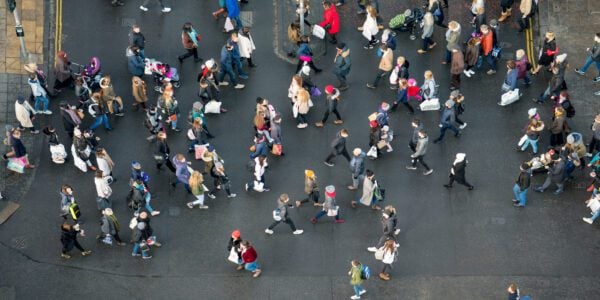
01/07/13
4 min read
Labour’s increased social spending delivered major improvements to services and social outcomes but wider inequalities persisted, according to a new report from the London School of Economics and Political Science (LSE).
The report, Labour’s Social Policy Record: Policy, Spending and Outcomes 1997-2010, assesses Labour’s record on social policy, including health, education, early years, neighbourhood renewal, benefits and pensions. It is a comprehensive analysis of Labour’s social policy record and the first phase in the Social Policy in a Cold Climate series of papers looking at the effect of political and economic change on social policy, poverty and equality.
The next phase will look specifically at the longer term effects of the financial crash and include up-to-date data on social policy under the Coalition government. This will be published in 2015.
The report found that where Labour targeted investment, outcomes improved. Increases in spending facilitated a reduction in rates of child and pensioner poverty, shorter hospital waiting times, improved teacher-pupil ratios and improvements in neighbourhood facilities. But some issues which were not targeted saw little progress. Poverty for working age people without children rose and there was no real change in overall levels of income inequality, while wage inequalities grew at the top.
The report shows:
- Public spending went up by 60 per cent and from 39.5 to 47.4 per cent of GDP; but until the crisis hit after 2008, spending levels were unexceptional by historic UK and international standards, and national debt levels were lower than when Labour took office.
- Most of the extra spending went mainly on improving services. For example there were new hospitals, schools, equipment and ICT, 48,000 extra FTE teachers, 3500 new children’s centres, and more doctors and nurses. Access and quality in public services improved – for example 90 per cent of social housing was brought up to a decent standard. The “gap” in the infant mortality rate between routine/manual groups and the whole population had dropped by 10 per cent in 2008-10.
- Other outcomes showed little progress. For example, in health, there were increases in the life expectancy gap between the areas with the worst health and deprivation and the England average. Obesity continued to increase. At GCSE, the socio-economic gap closed only very slightly at the level of five GCSEs including English and maths. The gap in educational outcomes between looked-after children and their peers widened on some measures.
Labour’s Social Policy Record, is one of three reports published today by LSE’s Centre for Analysis of Social Exclusion (CASE) as part of the Social Policy in a Cold Climate (SPCC) programme, which is funded by the Joseph Rowntree Foundation, the Nuffield Foundation, and the Trust for London.
Coordinating report author, Professor Ruth Lupton of the University of Manchester and CASE said:
“There is a myth that Labour spent a lot and achieved nothing. The evidence shows that outcomes improved and gaps narrowed on virtually all the socio-economic indicators that were targeted. Labour left the Coalition with a legacy of more equal outcomes on many measures, less poverty and expanded public services. However, their reliance on the labour market to improve the situation for working age people with no children did not pay off – some outcomes for this group got worse.”
CASE Director Professor John Hills, said:
“In a very different economic climate, Labour set out an agenda to raise outcomes overall, narrow socio-economic gaps and modernise public services. Many services were improved, and it achieved a striking narrowing of inequalities between different age groups and across the life cycle. Nevertheless, when Labour left power there had been no real change in wider income inequalities and parts of its vision remained unrealised.”
Also published today as part of the same programme:
Winners and Losers in the Crisis: The Changing Anatomy of Economic Inequality in the UK 2007 – 2010
This updates the 2010 report of the National Equality Panel, and maps out who gained and who lost in the first three years of the recession from 2007 to 2010.
Commenting on the paper Professor Hills said: “Despite being better qualified than previous generations, people in their twenties were worst hit by the financial crisis in terms of unemployment, pay and incomes.”
The report shows that among those in their early 20s:
- The proportion in full-time employment fell by nine percentage points for men and seven points for women.
- Hourly wages fell by more than five per cent for men and women
- Weekly full-time earnings fell six per cent for both men and women
- Net income fell by 11 per cent before housing costs and 17 per cent after housing costs.
A third report in the programme is also published today:
Prosperity, Poverty and Inequality in London 2000/01 to 2010/11
This report provides a new analysis of changes in poverty and inequality in London during the 2000s, with a particular focus on the impact of the recession, and on changes in London’s geography of poverty.
Full-time employment fell by less across London than elsewhere in the country, and there was a smaller rise in unemployment.
But while London coped well with some economic pressures, inequalities in earnings and incomes increased between 2006/8 and 2010. Those living on the lowest incomes were hit hardest, seeing incomes after housing costs fall by 24 per cent in real terms compared with 3.5 per cent nationally.
Commenting on this report, Professor Lupton said: “London’s economy and labour market were more resilient to the recession than other regions, although there was a rise in people working part-time. However, it remains a problem that London’s economic success does not seem to translate into lower poverty or reduced inequality overall.”
Full reports and summaries available on the CASE website:
- Labour’s Social Policy Record: Policy, Spending and Outcomes 1997-2010
- Labour’s Record on Health
- Labour’s Record on Cash Transfers, Poverty, Inequality and the Lifecycle
- Labour’s Record on Education
- Labour’s Record on Neighbourhood Renewal in England
- Labour’s Record on the Under-fives
- Winners and Losers in the Crisis: The Changing Anatomy of Economic Inequality in the UK 2007 – 2010
- Prosperity, Poverty and Inequality in London 2000/01 to 2010/11





















































